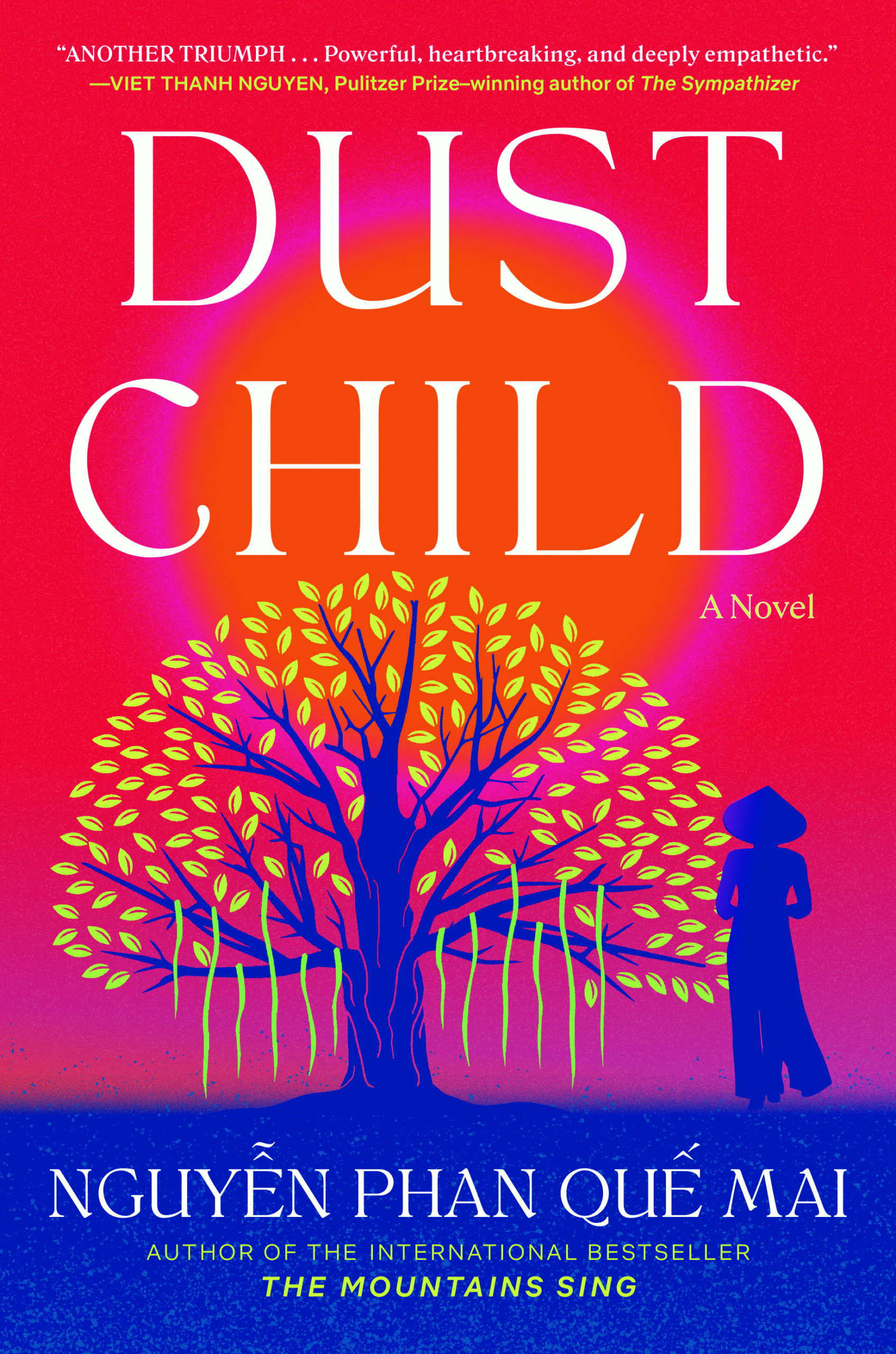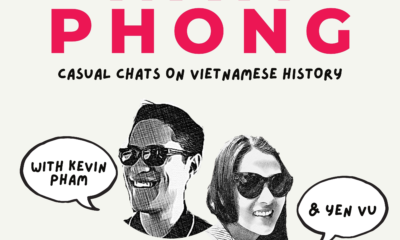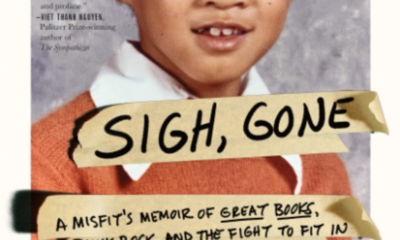After 1975
The Vietnamese American community in its early days: Bolsa then and now
Published on
By
Son Vo Kim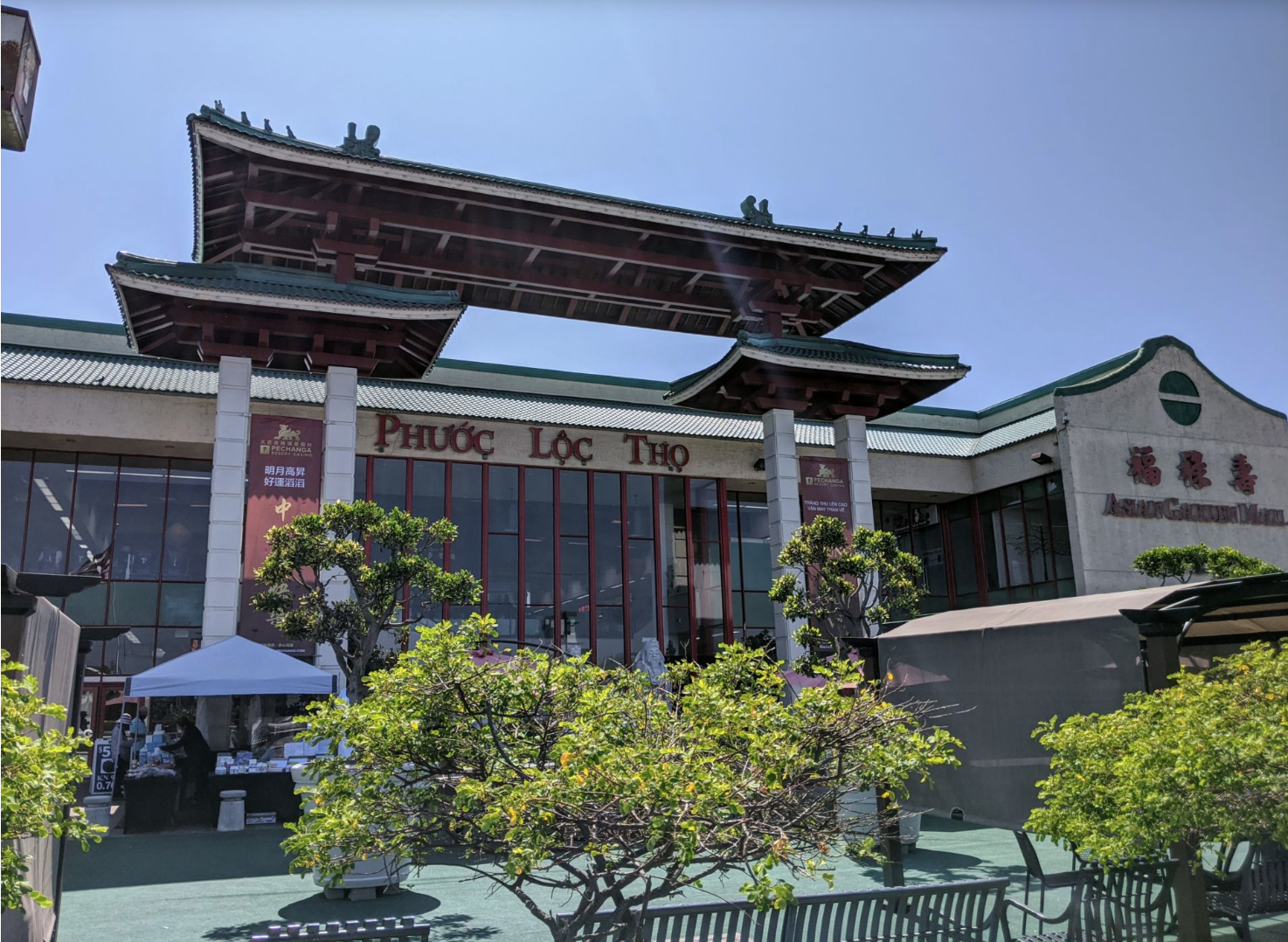
(Phước Lộc Thọ shopping center on Bolsa Street)
Editor’s Note: This piece was translated by our editor Vinh Phu Pham and was originally published on our Vietnamese site on 7/3/23. Edits have been kept to a minimal in the translation process.
Looking at the parade on Bolsa Avenue on the first day of Tet Quy Muoi Mao, January 22, 2023, memories of the vast strawberry fields along the right side of the road from Magnolia Street to Brookhurst came to my mind. Tourists often ask: Why did Vietnamese refugees choose the Bolsa area to gather and engage in wholesale trade, leading to the creation of the two beloved words “Little Saigon,” officially established in 1987 in Orange County.
In 1975, the first wave of refugees, known as Wave I, consisted of those who left Vietnam by helicopter and were transferred to the US-Vietnam naval ships waiting offshore. Some fortunate individuals had connections with Americans both inside and outside the country or had relatives living abroad who were well-informed about the situation in Vietnam, enabling them to leave before April 30. These ships took them to Subic Bay, Guam, and then they were flown to Camp Pendleton in Southern California. Churches across the United States welcomed them to colder states, where many job opportunities were available. However, upon learning about California’s warm climate, they decided to stay at Camp Pendleton.
Upon hearing that a large number of Vietnamese, Laotian, and Cambodian refugees had arrived at Camp Pendleton, Vietnamese students studying abroad and American students from various California universities volunteered to help the refugees. The first American volunteer at Camp Pendleton was Mrs. Alicia Cooper. Every week, the Camp Pendleton administration would go to Chinatown in Los Angeles to purchase rice and fish sauce, which were essential Vietnamese foods. Thanks to this, they had the opportunity to explore Orange County each time they passed by.
At present, the Episcopal Saint Anselm Church is located at 13901 Galway Street, Carden Grove, CA. One of its members owns several vacant apartments next to Bolsa Grande High School at the corner of Westminster and Bushard in the city of Garden Grove. Hearing that Camp Pendleton is about to close and many families won’t receive any assistance, this apartment owner immediately went to Camp Pendleton to welcome all the surviving families because other volunteers were reluctant to take in large families. His compassionate act was widely recognized and appreciated by fellow compatriots living in colder regions, and many of them quickly returned to the warm place that resembled Vietnam.
Major Vu Van Loc described in the book “Back to the Land of Freedom” the scene of two families piling into a worn-out, used Volkswagen and a beat-up station wagon, traveling for several days from Colorado to Orange County, making multiple stops for car repairs. Eventually, they arrived at the appointed meeting place. From then on, Saint Anselm Episcopal Church became a Center to help refugees sponsor their relatives from various refugee camps through the Refugees Programs and Orderly Departure Program, supporting refugees from Vietnam and beyond.
Now, Saint Anselm Center is closed, but every year, the Catholic Student Association invites those less fortunate, lonely, and homeless to celebrate Thanksgiving together at the church on the Friday after Thanksgiving. It is said that the students will also celebrate the 25th Thanksgiving anniversary at this place in 2023. Creating joy for the students and less fortunate individuals during this special Thanksgiving celebration is Father Ta Anh Kiet, who was once a student at Cal State Fullerton. Later, Father Bill Cao also joined to expand the circle of compassion for the Thanksgiving program.
Speaking of the expansion of Little Saigon, we must mention businessman Frank Jao, the owner of Phuc Loc Tho Mall. According to Document I in the “Development of the Vietnamese American Community in Orange County” and an interview with The Los Angeles Times, Frank Jao lost his property in Vietnam and arrived in Orange County with only 50 cents in his pocket. A sponsor introduced him to the door-to-door cleaning product sales business back in the days. Luckily, he met a homeowner involved in real estate who invited him to join the team. FJ then invited Pharmacist Quach Nhut Danh, the owner of the first Vietnamese Western Pharmacy in Orange County, to invest in the business. Together, they transformed the strawberry fields along Bolsa Avenue into Phuc Loc Tho Mall and other bustling wholesale areas as they are now. Subsequently, Dr. Pham Van Hoang followed Ds. Danh, his old friend from Vietnam, to Orange County and became the first doctor to serve the Vietnamese refugees there.
In the 1980s, the majority of Vietnamese refugees who came to Orange County were part of Wave II, known as the Boat People. This term was most widely used in 1979 at refugee camps in Songkla, Thailand; Pulau Bidong, Malaysia; and Galang, Indonesia. It originated from the practice of referring to overseas Vietnamese, particularly ethnic Chinese, as “selling officially” to distinguish them from the local population in Vietnam. They were forced to leave the country by the Vietnamese government. Some Vietnamese people also tried to enter Thailand through Cambodia by land, but unfortunately, very few succeeded as the path was dangerous due to landmines. At that time, my family, including my grandfather, my husband (who was a returning student after military service), and myself (who met the official criteria but couldn’t wait in desperation), decided to take the risky path of “o-di-ghe” (clandestine boat trip). We drifted at sea for 3 days and 4 nights with 136 boat people, not knowing where we were or where we were headed. Fortunately, on the dark night, we encountered a U.S. ship that led us back to Pulau Bidong Island on June 1, 1981. Standing on the U.S. ship and looking down at our small boat, it seemed like a tiny mosquito in the vast sea. We temporarily stayed at the Threshold of Freedom camp and set foot on John Wayne Airport in Santa Ana, California at 4 pm on September 26, 1981.
Orange County now is quite different from 1972 when we were international students studying at USC – the University of Southern California, Los Angeles – from the buildings to the people. Back then, we had a kind-hearted friend, Phan Thanh Ngo, who was the only one with a car and would take us to the flea market for free. We happily squeezed together, even sitting on the floor of the car, as there were no Seat Belt laws to restrict us. Through our student status and conversations, we received much affection from the locals through their glances and inquiries.
Oh, the friendly glances from the past are no longer present. Now it’s 1981, and we are seen as refugees, meaning migrant people living off the local taxpayers’ money. While driving on the roads, we often hear the tune of “Back to Saigon” rhythmically played by a group of local young people banging on the sides of their cars. At American markets, when waiting in line to pay, we always hear reminders: “No food stamp.” Once, when I visited an American store to buy a box of chocolates to give to my friend’s brother, Dang Dinh Tri – a familiar voice on the radio before 1975 – during their invitation for a meal. The cashier shouted loudly, “No food stamp.” I fell silent, thinking I didn’t understand, but she pointed to the Food Stamp sign and said, “No, No, No.” I quietly handed her a silver 20-cent coin, and she quickly put the chocolates in a paper bag, pressing the bag closed as if she was doing someone a favor. It was not surprising; she was ripping off the owner.
During that time, the Hoang Co Minh movement to return to Vietnam was famous. People encouraged each other to contribute efforts or go to Thailand to liberate Vietnam. Everyone tried to raise funds in every way, even asking for leftovers from neighbors to sell at garage sales and gather every penny. In families, parents taught their young children to distinguish between the Viet Cong and the Republic of Vietnam. Anh Chi Dang Dinh Tri was no exception. When I entered their house, Hoa, aged 5, and Thao, aged 3, asked me straight away, “Are you Viet Cong?” Teasing them, I replied, “Yes.” The two quickly argued with each other, saying, “Dad is not your friend Viet Cong.”
Living with two cultural backgrounds in a new society is not easy. For those who left Vietnam at a young age, it’s easy to abandon Vietnamese culture and embrace new memories of living in Vietnam. In truth, how much cultural heritage do they actually remember? The most pitiful are the teenagers who are often confused and easily swayed by the current living standards, following the local customs. Parents are even more unfortunate, carrying the heavy memories of their homeland and not having enough resources to help their children pursue trendy fashion. In particular, in the first and second levels of high school, students are often divided into many groups. Parents who favor peace advise their children, “A moment to hesitate, nine good deeds.” But there are also bold students who say, “Throw a stone, throw a brick back,” so every day in Intermediate Schools and High Schools, there are fights between different groups, especially in schools where there are many Vietnamese, Mexicans, and African-Americans.
There was a time when the government officials wanted to implement the BUSING policy for Vietnamese students, similar to what was done in the past for students of color. We thank the first Assemblyman, Tony Lam, from the city of Westminster, for opposing the implementation of the BUSING policy back then. If the BUSING policy were applied now, it would mean that whichever school had a high number of Vietnamese students would randomly select some students to attend schools farther from their homes, requiring them to take the bus to schools with fewer Vietnamese students. In the end, both the host and the “temporary guests” found a way to live together harmoniously, learn from each other, and adapt. The Orange County Department of Education introduced a concise program to introduce Vietnamese culture to schools in Orange County.
One of the most touching moments was when American teachers took the initiative to learn more about Vietnamese culture. On Tet days, these teachers would sit and meticulously fold each penny to give as lucky money to the students. In hospitals, healthcare workers; on the streets, police officers would take notes of every phrase they needed to exchange with the Vietnamese people and bring them to Vietnamese language classes to teach them to read and speak fluently. On our side, college students started organizing Tet fairs in 1983 at the corner of Hoover and Westminster, which is now the Seniors’ housing area. Despite the pouring rain, after leaving the class at Cal State Fullerton, we rushed down to set up the stage.
The students fought their hunger with one-day-old bread rolls from the Salvation Army. The first MC of the Tet fair was Lawyer Pham Dao Bach Tuyet. At 10 o’clock, the guests started arriving while the students on stage were still rehearsing their performances. On that occasion, Lawyer Bach Tuyet introduced the Vietnamese Community and Culture to the distinguished guests. We are grateful to Lawyer Bach Tuyet for her significant contribution to the integration journey of both sides. The following year, the students had to find a new location because the old site, in the city of Westminster, started building apartments for Seniors. The students struggled to find a new location, and they settled in the sky market area around Golden West Community College. Unfortunately, it rained heavily during the fair days, and the whole yard was flooded. The students came up with the idea of buying straw mats and spread them all over the yard to help visitors avoid wet feet. Unexpectedly, after Tet, Golden West College demanded compensation from the students for damaging the grass. Poor students, they didn’t know how much they had to pay for that mistake.
Then, the following year, Dr. Pham Dang Long Co, Chairman of the Vietnamese-American Chamber of Commerce, took action to open the Tet Fair along Bolsa Avenue from Magnolia to Bushard. Vietnamese people from different counties and even the colder states enjoyed escaping the cold and came to Bolsa to do their Tet shopping to ease their homesickness. As a result, people from all walks of life eagerly lined up to enter the Tet Fair and see what was inside. Alas, the organizing committee only had one entrance and exit to control the flow of visitors. Once inside, no one wanted to leave without seeing everything, and once outside, they found it difficult to get back in. It was cramped inside and a long queue formed outside. Police officers and rescue workers were worried about potential chaos and automatically brought in additional personnel based on the ratio of people inside and the visitors outside. However, the waiting was too long, and some guests gave up and left. Although the line of visitors was long, the money collected at the entrance was not much. Upon checking, the bills from the Fire Department and Police Department totaled $90,000. Dr. PDL Co took it upon himself to manage it all. Hopefully, he could apply the experience from the previous year to improve the situation next year. Dr. Co decided to put in extra effort, but the weather turned against him, and it started raining heavily. He rushed to Home Depot to buy a water suction machine and came back to use it to clear the waterlogged area himself, sweating profusely. Dr. Co looked very professional in his effort. The Vietnamese Community has a debt of gratitude to Dr. PDL Co.
Living in a new society for quite some time, the Host and Guest have come to realize that the best way is to live in harmony and adapt, but it requires both sides to make an effort to learn about each other’s culture. Where can they find a place to exchange cultures? The US Government realized that community organizations are the best cultural bridges to bring the Host and Guest closer together. The most notable is the Vietnamese Community of Orange County, the first non-profit organization established in Orange County, led by Ms. Mai Cong as the Chairwoman, along with a fully represented Council and a shared spirit of volunteerism. Ms. Mai Cong specialized in Mental Health, and Engineer Truong Hung specialized in accelerated training for the team of Electronic Assemblers needed during the “Tech Husband, Assembly Wife” era. Sometimes, it was 7 pm, and the company still called VNCOC (Vietnamese Community of Orange County, Inc.) to request 50 assemblers who would be picked up at 6 am tomorrow. The VNCOC organization worked like clockwork since its inception, thanks to Mr. Bui Manh Cuong, who has his office on Bolsa Avenue, which is now Mr. Baguette’s store. Choosing the appropriate program to find funds for implementation was carried out by former lawyer Le Trong Uyen and his wife, Judy Hue Pham. Both were actively involved in the Pulau Bidong refugee camp committee, and they were familiar with the needs of new settlers, so they were always ready with programs to request government funds for implementation. Giving encouragement to everyone was Pharmacist Vu Boi Tu, wife of Dr. Pham Dinh Tuan, Chairman of the Vietnamese-American Chamber of Commerce before Dr. Pham Dang Long Co. She never missed any meeting, and some meetings would extend until 11-12 pm, despite the fact that Mrs. Vu Boi Tu co-founded and chaired the Trung Vuong Alumni Association.
During that time, the Petrus Ky Alumni Association quickly took shape, thanks to the former Vice Principal of Phu Tho Technical School, Le Van Thanh. Just 10 days after arriving in the US, he was invited to work at the Saint Anselm Refugee Center, where Reverend Nguyen Xuan Duc, another former Petrus Ky student, also worked. Taking advantage of the opportunity, Thanh invited Tran Ngoc Thuat, who later became Dr. Tran Ngoc Thuat, an Eastern Medicine Doctor, to join and discuss the future development of the association. However, nobody contributed any money because everyone was newly arrived refugees and still struggling financially. The following year, former Consul General of Education, Huynh Trung Nghia, left the cold climate of Philadelphia to move to heavily Vietnamese-populated Orange County. The work atmosphere at Saint Anselm was much more Vietnamese and warm. Nghia, a former Petrus Ky student, actively contributed to the association’s development.
Talking about the Petrus Ky Alumni Association, one must remember the Gia Long Alumni Association. The one who initiated the association was Ms. Huynh Thi Nhan. As a former Headmistress of Gia Long Girls’ High School, Ms. Nhan easily gathered female students who wore the “purple uniform.” Later, whether it was any school in Central or Southern Vietnam, whether it was Doan Thi Diem or co-ed Phan Thanh Gian in Can Tho, or the female school Le Van Duyet in Gia Dinh, the female students’ uniform remained the traditional white ao dai. Together with the development of the Alumni Associations of schools in Saigon and other regions, various Alumni Associations and Hometown Councils were established to meet and alleviate the nostalgia for their alma maters.
While everyone in the Community found joy in reminiscing about old memories during annual meetings, a small group of healthcare professionals in Santa Clara, Orange, and San Diego Counties combined their efforts to create a case of Medicaid abuse. Across the United States, the US government funded the states to provide healthcare for financially disadvantaged individuals through the Medicaid program. In California, Medicaid is known as Medi-Cal. Even though they were not yet official US citizens, newly arrived refugees could also benefit from the Medi-Cal program. However, the consequences of this abuse had significant implications, especially for Vietnamese students. At school, the students were afraid to eat in the cafeteria because they were bullied by their fellow students. They felt lost and confused, being so young and unfamiliar with everything. Fortunately, over time, all these adversities eased, leaving the issues of Medicaid abuse behind.
Then a strange phenomenon occurred. In Orange County, known for its anti-Communist stance, someone dared to hang a picture of Uncle Ho (Ho Chi Minh) in a video rental store called “Tran Truong.” This was indeed an opportunity for the Vietnamese Community to express their strength in opposing the Viet Cong. For over ten days, people of all ages gathered to protest against the Tran Truong store. Adults and children were eager to participate in the anti-Communist demonstrations. People left work early to have dinner at home. Students left school early to review their lessons and have dinner before joining the protests in the evening. On Bolsa Avenue, a continuous stream of people marched, creating concerns for the police about what might happen. The demonstration committee proposed automatically donating money to build a Community Center. For so many years, such a center had never existed anywhere.
Today, February 24, 2023, social media reminded everyone that it had been exactly one year since Ukraine was invaded by Russia. Both sides had hundreds of thousands of soldiers and civilians as war victims. Deaths and devastation resulted in families being torn apart, and homes turned to ruins. Recalling the Vietnam War from 1945 to 1975, a conflict that lasted for many decades, one could only wonder how much more suffering there had been. The most heart-wrenching thing was the Nationalist Mother Nghia Tu, who endured the pain of losing loved ones and cried for her husband and son simultaneously. And now, what were they entitled to? The Nationalist Mother and her surviving young children couldn’t take advantage of the program to immigrate to the United States under the Humanitarian H.O. program designed for officers of the Republic of Vietnam who attended a three-year reeducation program. Nationalist children, can you tell us? Except for some individuals who were selected before 1975 to study abroad under the Leadership Program, such as Le Hong Da, Mat, Vuong Thi Ngoc Dung, Thuy, and others, how did the rest of you get to the United States after 1975?
“O-di-Ghe” refers to crossing the ocean by boat. Orderly Departure Program (ODP) refers to having relatives arrive in the United States first and then facilitate the process of bringing family members from Vietnam through planes. Or were you military personnel who received education like your father? I will always remember the sadness and hardships of the Nationalist Mother and other Nationalist children who were still young after 1975. How can this be resolved?
Võ Kim Sơn
Professor of Martial Arts at Quốc Gia Nghĩa Tử, 1964-1967
1. Additional reading materials can be found at the Public Library in Santa Ana, the Department of Oral History at Cal State Fullerton, and the Viet Refugee Archive at the University of California, Irvine.
Song Ngữ . English and Vietnamese. An Oral History.
The Vietnamese Community in Orange County
Vol. I Business Development in Orange County
Vol. II Religions and the resettlement of Vietnamese Refugees
Vol. III REFUGEE SERVICE PROGRAMS and
MUTUAL ASSISTANCE ASSOCIATIONS
Vol. IV PRESERVATIO OF CULTURAL HERITAGE AND
THE VIETNAMESE MEDIA
Published by the Intercultural Development Center, Office of International Education and Exchange, Division of Student Affairs, California State University, Fullerton and Newhope Branch of Santa Ana Public Library.
2. The generous contributions of American benefactors have played a special role in the development of Vietnamese culture in Orange County.
Dr. Ken Iglesias, Dean of Area 4 at Coastline Community College and later President of Golden West College in Orange County, introduced the Vietnamese language program at Coastline Community College, marking the first time such a program was offered at a community college in the United States.
Late President Milton Gordon, Associate Vice President Howard Wang, Late Dean Donald Castro, Dr. Craig Ihara, Dr. Ellen Junn, and Dr. Thomas Fujita provided assistance and transformed the program from its initial Vietnamese language class at the university level into a specialized Vietnamese Studies program at California State University, Fullerton, after 15 years. Students can now graduate with a Bachelor’s degree in this field.
Robert Ericksen, from Cal State Fullerton, established the World Cultures Educational Office, which later became the Asian Cultural Center, to preserve documents and develop Asian culture.
Dr. Arthur Hansen, from Cal State Fullerton, specialized in Oral History and advised early on: “We must establish an Oral History project on the Formation and Development of the Vietnamese Community in Orange County. I am willing to teach the method and how to select interviewees. We must do this as soon as possible before the people we want to interview pass away.”
Dr. Mary Kay Tirrell, late Professor of English, and late Academic Vice President Dennis Berg, both from Cal State Fullerton, created an English class, English 499, to review fundamental English writing skills. Students need to improve their English language proficiency and have the right to take an English competency exam upon graduation or choose to take the English 499 review class, which is only available at Cal State Fullerton. This is a mandatory requirement for obtaining Bachelor’s degrees.
Gary Strong, Director of the California State Public Library, skillfully led the Delegation to participate in the White House Conference in Washington D.C. in 1990 (after a gap of 12 years), and now, after all these years, there are Vietnamese-language materials, books, and music videos, along with Vietnamese staff, in libraries in cities with a significant Vietnamese population.
3. Special Vietnamese benefactors are the doctors, dentists, and pharmacists who graduated in Vietnam and underwent an equivalent theoretical exam and practical training at various U.S. facilities if they did not wish to start their education from scratch in the U.S. These special benefactors were given the nickname “The Tongue” by the Vietnamese Community, and this refers to Dr. Quynh Kieu, who was assigned this title by Sacramento.

Reflections on New Era of National Rise by Vietnam General Secretary Tô Lâm

Of Space & Place: On the Nationalism(s) of Tuan Andrew Nguyen’s “Our Ghosts Live in the Future”

Postwar Music In Vietnam And The Diaspora

Translation: The Decision in 2013 of the Central Committee of the Communist Party of China on Certain Major Issues Concerning Comprehensively Deepening Reform

Thủ Đức Demonstration High School: A Modern Educational Policy and Teaching Method of the Republic of Vietnam

Vietnam’s unresolved leadership question

Rethinking History and News Media in South Vietnam

“The Vietnam War Was an Unwinnable War”: On Factuality and Orthodoxy

Democracy in action: The 1970 Senatorial elections in the Republic of Vietnam (Part 1)

Pandemics and Morality: Lessons from Hanoi
US-VIETNAM REVIEW
-

 Politics & Economy4 years ago
Politics & Economy4 years agoVietnam’s unresolved leadership question
-

 Politics & Economy2 years ago
Politics & Economy2 years agoRethinking History and News Media in South Vietnam
-

 After 19751 year ago
After 19751 year ago“The Vietnam War Was an Unwinnable War”: On Factuality and Orthodoxy
-

 ARCHIVES5 years ago
ARCHIVES5 years agoDemocracy in action: The 1970 Senatorial elections in the Republic of Vietnam (Part 1)
-

 Society & Culture5 years ago
Society & Culture5 years agoPandemics and Morality: Lessons from Hanoi
-

 Politics & Economy4 years ago
Politics & Economy4 years agoThe Limit to U.S.-Vietnam Security Cooperation
-

 Politics & Economy5 years ago
Politics & Economy5 years agoNational Shame: How We (Americans) can learn from Nguyễn An Ninh
-
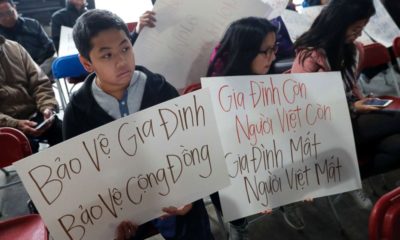
 Vietnamese-America4 years ago
Vietnamese-America4 years agoDeporting Vietnamese Refugees: Politics and Policy from Bush to Biden (Part 1)


